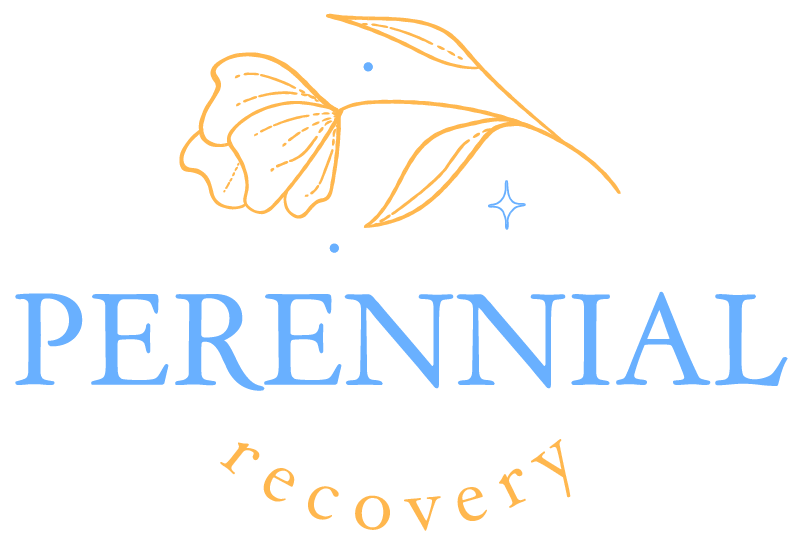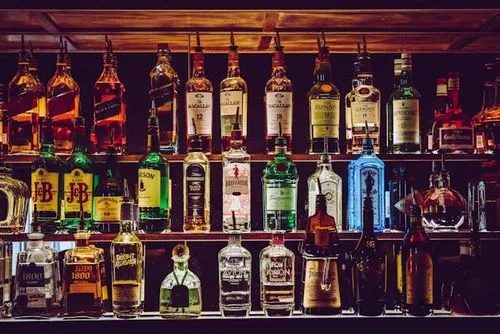Unveiling the Dark Past: The History of Substance Use
Exploring the history of substance use allows us to understand the societal, cultural, and medicinal significance of various substances throughout time. From ancient civilizations to the modern era, the use of substances has been intertwined with human existence. This section will provide an introduction to substance use throughout history, focusing on the early use of substances in ancient civilizations.

Introduction to Substance Use Throughout History
Substance use has a long and complex history that dates back thousands of years. Humans have been drawn to the effects of various substances, whether for medicinal, recreational, or spiritual purposes. Throughout different cultures and time periods, substances have played significant roles in rituals, ceremonies, and everyday life.
Early Use of Substances in Ancient Civilizations
In ancient civilizations, the use of substances was prevalent and had diverse purposes. Let’s take a look at some notable substances and their early uses:

These substances were often integrated into cultural practices, religious ceremonies, and traditional medicine. The early understanding and use of substances laid the foundation for future developments in the field of pharmacology and medicine.
By examining the historical uses of substances, we gain insight into the cultural significance and societal impact of these substances throughout different time periods. It is important to note that societal attitudes and perceptions towards substance use have evolved over time, influenced by various factors such as scientific advancements, social norms, and legal regulations.
In the subsequent sections, we will delve into the Middle Ages, the rise of opium, the era of prohibition, the modern drug epidemic, and the future of substance use. By exploring these historical contexts, we can better comprehend the complex relationship between humans and substances, and the ongoing efforts to address substance abuse and addiction in society.
Substance Use in the Middle Ages
During the Middle Ages, substance use took on various forms and served different purposes. Let’s explore two significant aspects: medicinal purposes and herbal remedies, as well as ritualistic and ceremonial use.
Medicinal Purposes and Herbal Remedies
In the Middle Ages, substances were widely used for medicinal purposes and to treat various ailments. Herbal remedies, derived from plants and natural sources, played a prominent role in healthcare practices of the time. These remedies were often prepared by apothecaries and healers who had extensive knowledge of herbs and their medicinal properties.

These substances were used in the treatment of a wide range of conditions, including pain, fever, digestive issues, and skin ailments. It is important to note that the understanding of medicine and the use of substances during this time were based on the knowledge and beliefs of the era, which may differ significantly from modern medical practices.
Ritualistic and Ceremonial Use
Substances were also used for ritualistic and ceremonial purposes during the Middle Ages. These practices were often deeply intertwined with religious and spiritual beliefs. Various substances were believed to have mystical or transformative properties, and their use was seen as a means of connecting with the divine or altering one’s consciousness.

These substances were considered sacred and were incorporated into rituals, prayers, and ceremonies. The precise rituals and practices varied across different cultures and regions, reflecting the diversity of beliefs and traditions during the Middle Ages.
The use of substances during the Middle Ages for medicinal purposes and in rituals and ceremonies highlights the historical significance of substance use. As we delve further into the history of substance use, we will explore the rise of opium, the era of prohibition, and the modern drug epidemic, shedding light on the evolving perceptions and challenges associated with substance use throughout time.
The Rise of Opium
Opium, a powerful substance with a complex history, has played a significant role in the development of substance use throughout the ages. This section explores opium use in ancient civilizations and its connection to the Opium Wars.
Opium Use in Ancient Civilizations
The use of opium can be traced back to ancient civilizations, where it was primarily used for its medicinal properties. Ancient civilizations, such as those in Mesopotamia and Egypt, recognized the pain-relieving and sedative effects of opium and incorporated it into their medical practices.
Opium was also utilized for recreational purposes, with evidence of its use in ancient societies for its euphoric and mind-altering effects. It was consumed in various forms, including smoking, oral ingestion, and the application of opium-based ointments.
Opium Trade and the Opium Wars
The opium trade emerged as a significant global phenomenon during the 18th and 19th centuries. European colonial powers, particularly the British, began cultivating opium in their colonies, such as India, and exporting it to other parts of the world, including China.
China, faced with a growing opium addiction problem, attempted to ban the import and sale of opium. This led to conflicts between China and Britain, resulting in the Opium Wars. The Opium Wars were a series of armed conflicts that ultimately resulted in China’s defeat and the forced legalization of the opium trade.

The Opium Wars had a profound impact on China, leading to a significant increase in opium addiction and social problems. It also highlighted the destructive consequences of unregulated substance use and the exploitative nature of the opium trade.
The rise of opium and its historical significance demonstrates the complex relationship between substance use, trade, and conflicts. Understanding the history of opium provides valuable insights into the development of substance use patterns and the societal challenges associated with addiction.
The Era of Prohibition
During a significant period in history, the United States implemented a nationwide alcohol prohibition, leading to a rise in organized crime and the establishment of a thriving black market.
Alcohol Prohibition in the United States
In the early 20th century, fueled by concerns about the social and moral consequences of alcohol consumption, the United States embarked on a bold experiment known as Prohibition. The 18th Amendment, ratified in 1919, banned the production, sale, and distribution of alcoholic beverages.
The aim of alcohol prohibition was to reduce crime, poverty, and societal problems associated with excessive drinking. However, the unintended consequences of this policy proved to be far-reaching. Despite the ban, the demand for alcohol persisted, leading to the rise of illegal activities and the emergence of speakeasies, underground bars where alcohol was secretly served.
The enforcement of prohibition laws posed significant challenges for law enforcement agencies, as criminal organizations quickly capitalized on the lucrative opportunity presented by the black market for alcohol. Bootlegging, the illegal production and distribution of alcohol, became widespread, with criminals smuggling alcohol from Canada, Mexico, and the Caribbean, or producing it in hidden distilleries and breweries within the United States.
Rise of Organized Crime and the Black Market
The prohibition era provided organized crime syndicates with unparalleled opportunities for profit and power. Criminal organizations, such as the notorious Chicago Outfit led by Al Capone, established a stronghold in the illegal alcohol trade. They controlled speakeasies, breweries, and transportation networks, effectively dominating the black market and reaping immense financial gains.
The violence associated with the illegal alcohol trade escalated, as rival gangs fought for control over territories and the lucrative profits at stake. This period marked a significant increase in organized crime activities, including smuggling, bootlegging, and the corruption of law enforcement officials.
Despite efforts to enforce prohibition, the demand for alcohol remained high, and public sentiment began to shift. Recognizing the social and economic consequences of prohibition, the 21st Amendment was ratified in 1933, repealing the 18th Amendment and effectively ending the era of alcohol prohibition in the United States.
The era of prohibition serves as a historical lesson, illustrating the complexities and unintended consequences of attempting to eradicate substance use through legal measures. It highlights the potential for organized crime to flourish in the face of stringent bans, and the societal impacts that can arise from such policies. Understanding this history is crucial in shaping current approaches to substance use and informing strategies that focus on education, prevention, and harm reduction.
The Modern Drug Epidemic
As we delve into the history of substance use, it’s important to examine the emergence of synthetic drugs and the ongoing challenges and efforts in substance abuse prevention that characterize the modern drug epidemic.
The Emergence of Synthetic Drugs
In recent decades, there has been a significant rise in the production and consumption of synthetic drugs. Synthetic drugs are human-made substances that mimic the effects of natural drugs, such as opiates or amphetamines. They are created by altering the chemical structure of existing drugs or developing entirely new compounds.
One notable example of synthetic drugs is synthetic cannabinoids, often referred to as “spice” or “K2.” These substances are designed to mimic the effects of marijuana but can be much more potent and unpredictable in their effects. The production and distribution of synthetic cannabinoids have posed significant challenges for law enforcement and public health officials due to their constantly evolving chemical compositions.
Another category of synthetic drugs is synthetic cathinones, commonly known as “bath salts.” These substances are chemically similar to amphetamines and can produce stimulant effects. However, they can also lead to severe and unpredictable side effects, including hallucinations, paranoia, and agitation.
The emergence of synthetic drugs has presented new challenges in substance abuse prevention and public health. Due to their chemical variability and constantly changing formulations, it becomes difficult for regulatory bodies to keep up with effective control measures. Moreover, the accessibility of synthetic drugs through online platforms and underground markets further complicates the efforts to curb their use.
Ongoing Challenges and Efforts in Substance Abuse Prevention
The modern drug epidemic brings with it a host of ongoing challenges in substance abuse prevention. Despite significant efforts, substance abuse remains a significant public health concern. Efforts to combat substance abuse include prevention programs, public awareness campaigns, treatment options, and policy interventions.
One of the ongoing challenges is the stigma associated with substance abuse. Stigma can hinder individuals from seeking help and support, making it crucial to promote understanding and compassion. Education and awareness campaigns play a vital role in reducing stigma and encouraging individuals to seek assistance.
Another challenge is the accessibility and availability of drugs. The internet has become a platform for the sale and distribution of illicit substances, creating a new frontier for law enforcement and regulatory agencies to navigate. Collaboration between various stakeholders, including law enforcement, public health officials, and technology companies, is crucial to address this challenge effectively.
Furthermore, the development of evidence-based prevention programs and treatment options is essential. Prevention programs aim to educate individuals about the risks associated with substance abuse and provide them with the necessary skills to make informed choices. Treatment options, on the other hand, focus on helping individuals with substance use disorders overcome addiction and lead healthier lives.
Efforts in substance abuse prevention also involve policy interventions, such as the regulation of pharmaceuticals and controlled substances. Stricter regulations and monitoring systems can help prevent the misuse and diversion of substances, ultimately reducing the prevalence of substance abuse.
By recognizing the emergence of synthetic drugs and addressing the ongoing challenges in substance abuse prevention, we can work towards a future where effective strategies and interventions help individuals lead healthier, drug-free lives.
Looking Towards the Future
As society continues to grapple with the consequences of substance use, there is a growing focus on advancements in addiction treatment and the importance of education and awareness. These two aspects play a crucial role in shaping a healthier and more informed future.
Advancements in Addiction Treatment
The field of addiction treatment has made significant strides in recent years. Researchers and healthcare professionals are continuously exploring new approaches to help individuals overcome substance use disorders and achieve long-term recovery. Some notable advancements in addiction treatment include:

These advancements highlight the progress being made in tailoring treatment approaches to meet the unique needs of individuals struggling with substance use disorders. By combining evidence-based practices with innovative techniques, addiction treatment continues to evolve, offering hope and support to those seeking recovery.
The Importance of Education and Awareness
Education and awareness play a vital role in addressing substance use issues across communities. By promoting accurate information and dispelling myths surrounding substance use, individuals can make informed decisions and support others who may be struggling. Here are some key reasons why education and awareness are crucial:
- Prevention: Education equips individuals with the knowledge and skills to make informed choices, reducing the likelihood of substance use initiation.
- Early Intervention: Increased awareness helps identify signs of substance use problems early on, allowing for timely intervention and support.
- Reducing Stigma: Education and awareness efforts aim to reduce the stigma surrounding substance use disorders, promoting empathy, and encouraging individuals to seek help without fear of judgment.
- Supporting Loved Ones: Education empowers family members, friends, and communities to provide support and resources to individuals struggling with substance use.
- Promoting Healthy Lifestyles: Education on the risks associated with substance use encourages the adoption of healthier habits and choices.
By investing in education programs, community initiatives, and public campaigns, societies can foster a culture of understanding, support, and prevention. Together, these efforts contribute to creating an environment where individuals are equipped to make informed decisions about substance use and seek help when needed.
Looking towards the future, advancements in addiction treatment and the emphasis on education and awareness provide hope for addressing substance use challenges. By continuing to prioritize research, support, and education, we can strive for a healthier, more compassionate society where individuals are empowered to overcome substance use disorders and lead fulfilling lives.
Sources
https://www.townsendla.com/blog/history-of-substance-use
https://drugabuse.com/addiction/history-drug-abuse/
https://www.ncbi.nlm.nih.gov/pmc/articles/PMC3202501/



